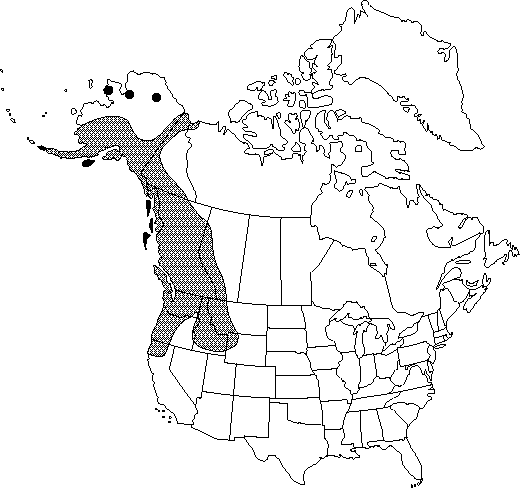Alnus alnobetula subsp. sinuata
Willdenowia 41: 129. 2011.
Shrubs, spreading, to 5(–10) m. Bark light gray to reddish brown; lenticels inconspicuous. Leaf blade light or yellowish green, narrowly to broadly ovate, 4–10 × 3–8 cm, thin, papery, base rounded to cordate, margins flat, sharply and coarsely doubly serrate, apex acuminate; surfaces abaxially glabrous to sparsely pubescent, lightly to moderately resin-coated. Inflorescences: staminate catkins 2.5–13 cm. Infructescences 1.5–2.5 × 0.8–1.3 cm; peduncles 1–3 cm. 2n = 28.
Phenology: Flowering spring.
Habitat: Along gravelly or rocky stream banks, lakeshores, and coasts, on moist rocky slopes, outcrops, in open coniferous woodlands
Elevation: 0–2500 m
Distribution

Alta., B.C., N.W.T., Yukon, Alaska, Calif., Idaho, Mont., Oreg., Wash., Wyo.
Discussion
Alnus viridis subsp. sinuata is one of the first successional taxa to appear in the northwestern mountains following disruption of the mature vegetation. It often forms dense thickets on avalanche and talus slopes. Sitka alder differs from the two previous subspecies in its paper-thin, light or yellowish green, doubly serrate leaves.
The Bella Coola used Alnus viridis subsp. sinuata medicinally although D. E. Moerman (1986) did not specify the nature of the remedies.
Selected References
None.